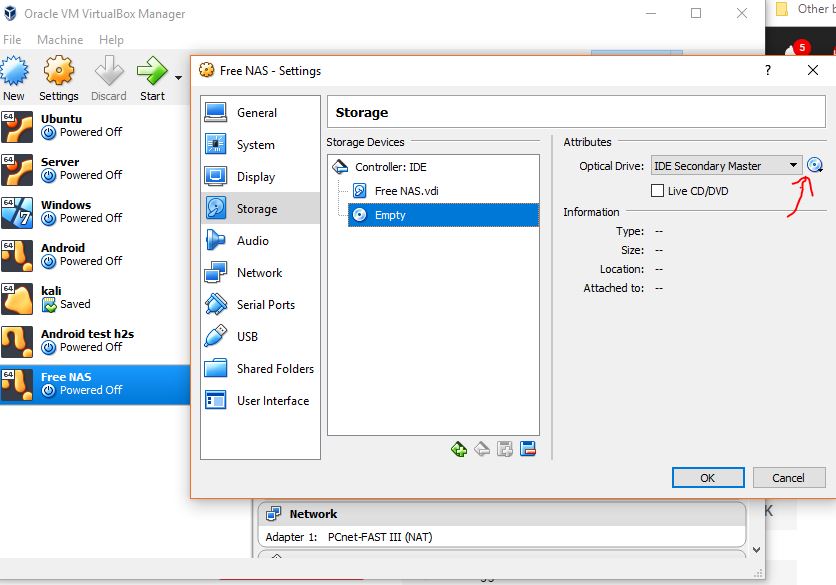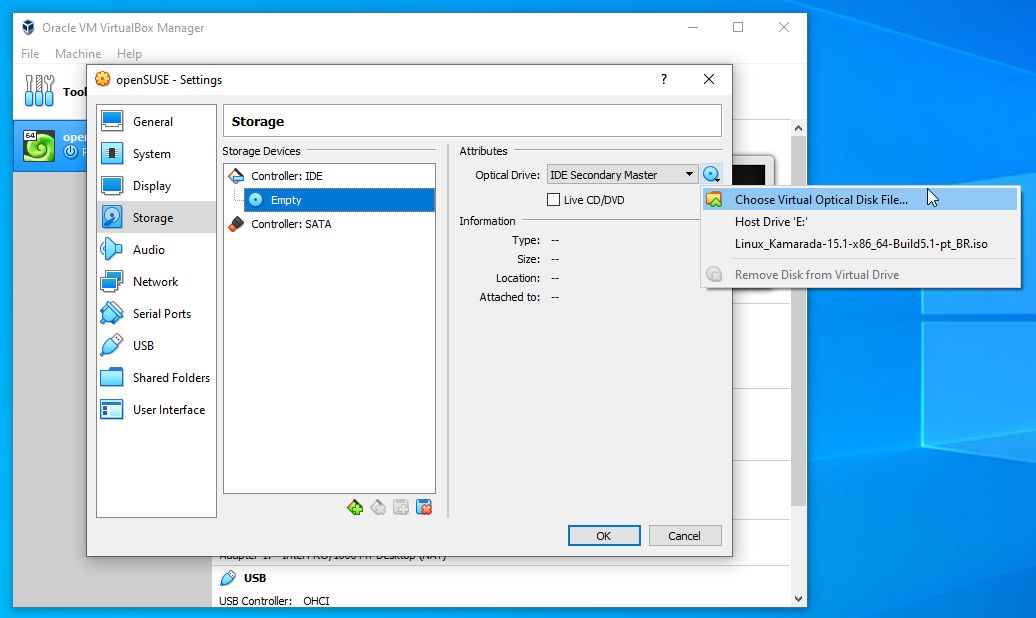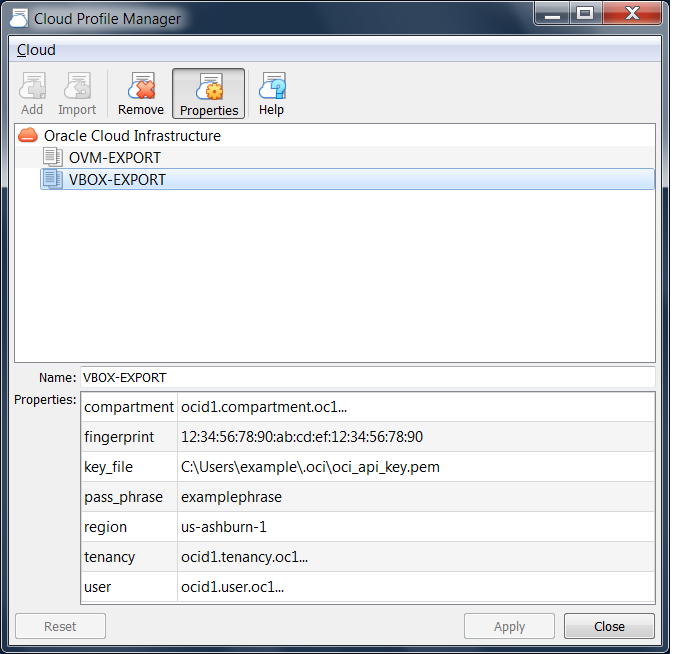
- #Virtualbox vm virtual optical disk file linux full
- #Virtualbox vm virtual optical disk file linux windows
#Virtualbox vm virtual optical disk file linux full
The full path of the selected folder should show up in the "Folder Path:" box.

For all adapters:Īdapter Type Paravirtualized Network (virtio-net)Ĭlick on the "Blue Folder Green Plus" icon.įolder Path -> Drop Down -> Select the "Other" folder -> This brings up a File browser window.īrowse to the folder you want to expose on the Guest and click Open. Adapter1 should be Host-only and Adapter2 should be NAT. This will allow you to communicate via ssh between any two arbitrary VMs – all you have to do is to start those VMs and they are instantaneously available to each other.Įdit "Adapter1" and "Adapter2". It is a good idea to use the same Host-only network for all the VMs you create on the same host, provided that you are careful to give those VMs non-overlapping IP addresses. This address is important because the host will add routes to it automatically, so if you want to be able to communicate with the virtual machines created to use this interface, without additional configuration, from the host, then you should give those VMs IP addresses from the 172.30.0.0/16 network.ĭo not use 172.20.*.*, it will clash with Marriott's addressing scheme Configure it as described here: VirtualBox Host-Only Networking Configuration.Ĭonventionally, vboxnet0 IP address is 172.30.0.1. If one already exists and you plan to share it, you're all set. Usually we we want to add one Host-only adapter and one NAT adapter (in this order).īefore adding the Host-only network adapter, go to VirtualBox -> Preferences -> Network -> Host-only Networks and add a Host-only network, if required. See VirtualBox Networking Concepts for clarifications. Solid-state Drive (if it's a Solid-state Drive) Scale Factor On client machines with high resolution, use 200%.
#Virtualbox vm virtual optical disk file linux windows
Pointing Device USB Tablet (this is important, default "PS/2 Mouse" does not handle well cursor transition between windows and you will need to Left Command to release the mouse. Select the newly created VM -> Right click -> Settingsīoot Order Optical, Hard Disk (deselect Floppy) Note Click OK often, if you go through many changes and successive tabs and don't click OK, Cancel will discard all changes. If you plan to manage this VM as part of a group, now is the time to create the VirtualBox group and move the VM in it. Storage on physical hard disk Dynamically allocatedĪfter this step, the VM should be created and you can review configuration in the right pane. Hard disk file type VDI (VirtualBox Disk Image) vdi extension and it will be available as ~/VirtualBox VMs//.vdiįile size A typical minimal RHEL 7.2 takes about 1.6GB.

The corresponding physical file will get a.

The default name, which should be appropriate in most cases, is main-virtual-disk.

Always keep in mind the amount of physical memory available to your hypervisor, and how many VMs you plan to use at the same time.įile Location Will default to the VM name and that is appropriate. The VID (VirtualBox disk image) is a file with. The VM creation process with create the corresponding files in a directory associated with the VM, in ~/VirtualBox VMs/.


 0 kommentar(er)
0 kommentar(er)
